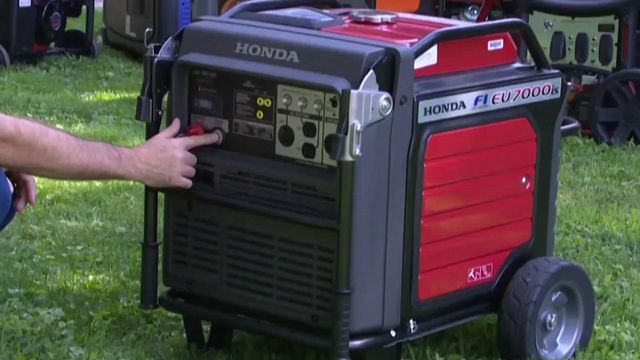How to safely operate a generator during a power outage
When the power goes out, generators come on, but they come with serious risks such as carbon monoxide poisoning, electrical issues, and fire.
Posted — UpdatedWhen the power goes out, generators come on, but they come with serious risks such as carbon monoxide poisoning, electrical issues and fire.
When enough ice builds on power lines and trees, they can come down, often causing the power to go out. Generators can help get essential electricity flowing again.
Mistakes to avoid when turning a generator on
Before cranking one up, consumers should know that they can quickly produce large amounts of carbon monoxide. The colorless, odorless gas can quickly knock a person out or even kill them. Generators must be placed outside and at least 15 feet from a home, with the exhaust pointed away.
Opening doors and windows or using fans do not prevent carbon monoxide buildup inside a home.
People should also install functioning carbon monoxide alarms in their homes. People should test the batteries and replace when needed.
Generators also come with electrical dangers. Many people don’t realize that the machines must be kept dry and need to be covered when it’s raining or snowing. The Red Cross recommends operating the generator on a dry surface under an open, canopy-like structure. Do not touch the generator with wet hands.
Another mistake people make is connecting a generator directly to a circuit box or trying to power the house wiring by plugging the machine directly into a wall outlet. Known as “backfeeding,” it can create an electrocution risk to utility workers and neighbors.
For those who have a generator just sitting in the garage, experts say the gas should be replaced every six months, and the machine won’t run properly if the gas is old. Generators also work best with a gas stabilizer and can use anywhere from eight to 22 gallons of gas per day.
When turning on the generator, make sure to use a heavy duty, outdoor power cord and let the generator run briefly before plugging in appliances. Appliances should also be plugged in one at a time, allowing each one time to power up and stabilize before plugging in another.
People without generators should not use charcoal or propane grills or heaters inside to heat the home. They can produce dangerous amounts of carbon monoxide.
Anyone who feels sick, dizzy or weak while using a generator should get to fresh air immediately.
• Credits
Copyright 2024 by Capitol Broadcasting Company. All rights reserved. This material may not be published, broadcast, rewritten or redistributed.






